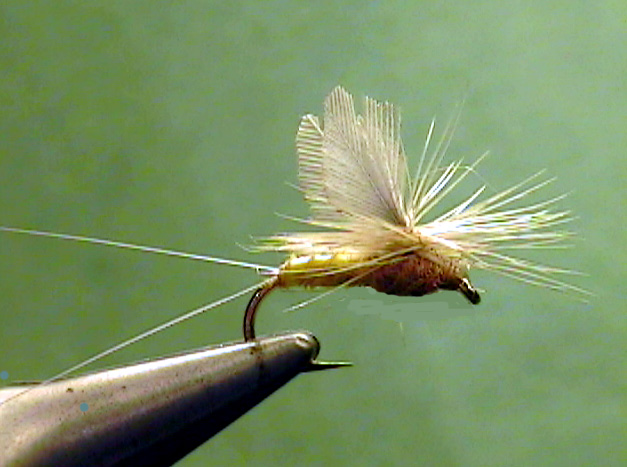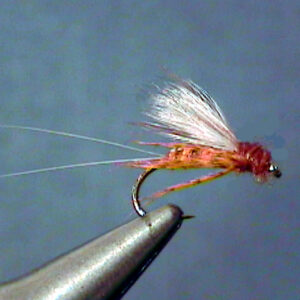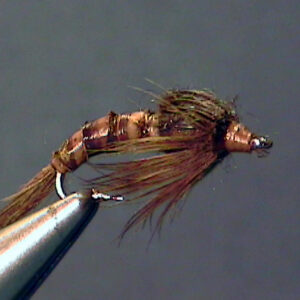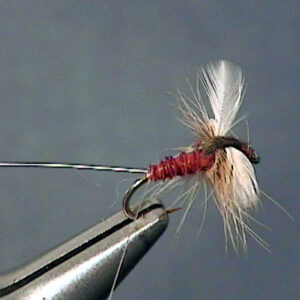Hook Size: 14
The Perfect Fly Gray Winged Yellow Quill Dun is an excellent imitation of the adult stage of life of the mayfly. It imitates the mayfly as it drifts or floats on the surface, drying it wet wings enough to fly off the water onto the banks, bushes or trees where it will eventually change into the spinner stage of life. It even imitates the dun down to two or three tails and it two upright wings. It is fished on the surface as a dry fly. It should be treated with floatant.
Before departing the water, the Gray-winged Yellow Quill duns may well be caught up in
strong currents. Since they hatch from cold water during fairly cold weather, they may
take some time to dry their wings staying on the surface for a lengthy time.
Dun Presentation:
Fish the dun imitation in the current seams (where the slower moving water meets the
faster moving water) at the edges of pockets formed by boulders and large rocks. Up
stream or up and across presentations work best. The pockets themselves can have
smoother, calmer water.
Approach the area you want to place your fly as slowly and quietly as possible. If you are
wading you want to move slowly and make certain you don’t move the cobble, rocks, etc.
around on the bottom. Make short cast and Keep the fly line out of the water as much as
possible to help prevent drag. If you cast up and across, you will probably have to mend
your line. You want the fly to drift down one of the two current seams formed by the
boulder. The trout feeding on the duns are usually located at the ends of the current
seams.
Copyright 2013 James Marsh



